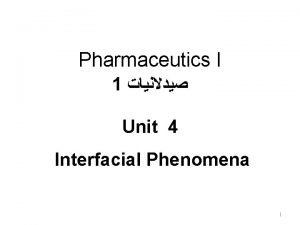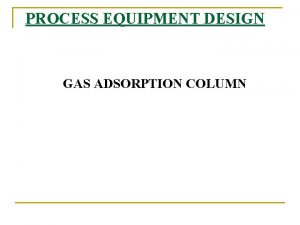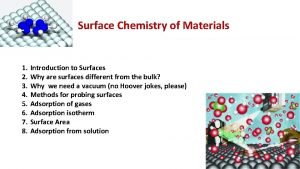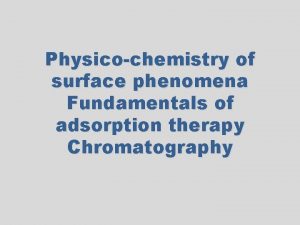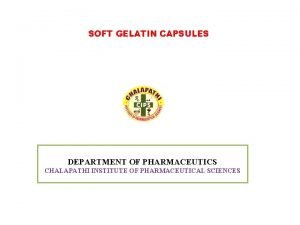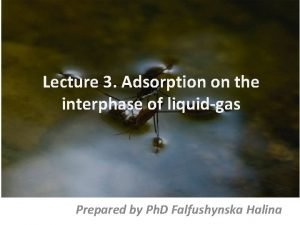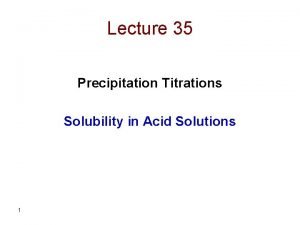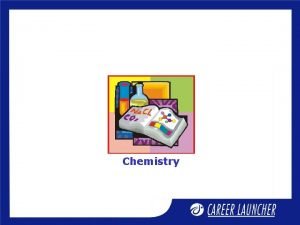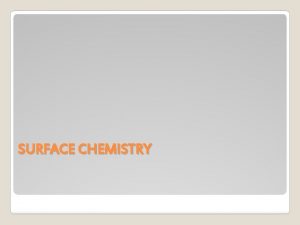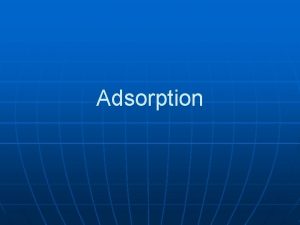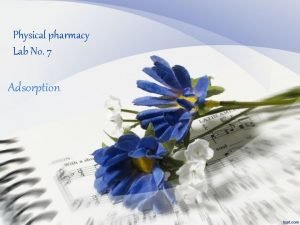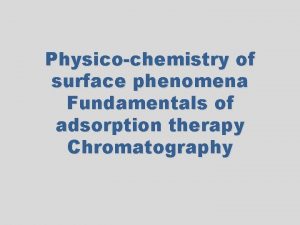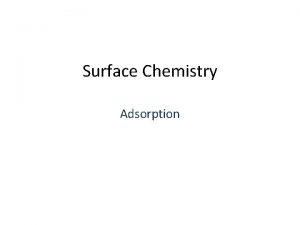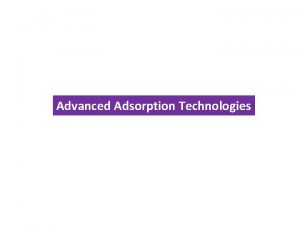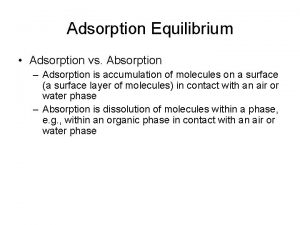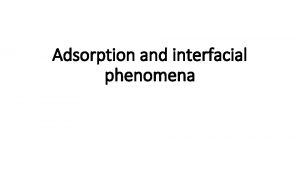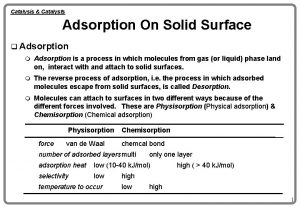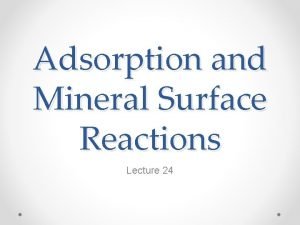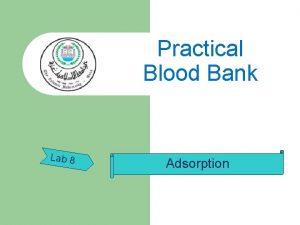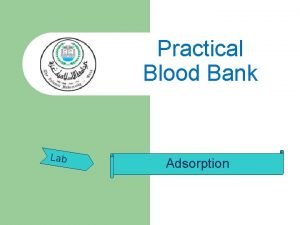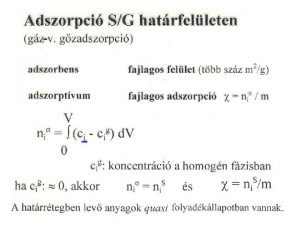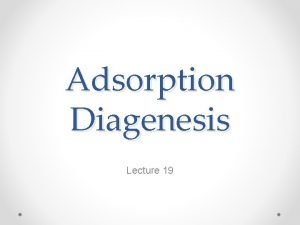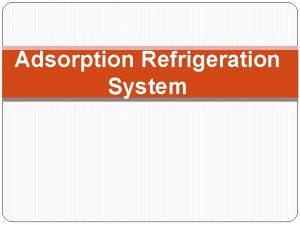Physicochemistry of surface phenomena Fundamentals of adsorption therapy
















- Slides: 16

Physico-chemistry of surface phenomena Fundamentals of adsorption therapy Chromatography

Surface energy and surface tension Living organism is a set of systems with highly developed interface - skin, blood vessel walls, cell membranes, etc. The properties of the molecules forming the surface are different from those in the bulk. Surface molecules tend to move inside the body of substance. In order to overcome intramolecular interaction and to make a new interface work should be done.

Surface tension Free Surface Energy –is the work per unit area done by the force that creates the new surface. F= ∙S Surface Tension (σ) is a work required to form a unit of surface area of a liquid, J/m 2 or N/m. s =F/S Decreasing the surface area of a mass of liquid is always spontaneous (ΔG < 0) and can occur by two ways: • reducing surface area S (sphere has the minimal surface area) • reducing surface tension

Sorption Adsorption Absorption Adsorption – is a surface phenomenon. It consists in a change in the concentration of one substance in a surface of another substance. Adsorption diminishes with the elevation of the temperature. Absorption – is the accumulation of one substance in the entire volume of another substance (dissolving of gases in liquids). Physical adsorption takes place when the particles of the adsorbate are held on the surface of the adsorbent by the physical forces such as Van der Waals forces. Chemical adsorption occurs when the molecules of the adsorbate are held on the surface of the adsorbent by the chemical forces. It is reversible and decrease as temperature increases.

Gibbs equation •

Adsorption •

Adsorption at Liquid-Gas interface Surface Active Substances – molecules and ions that accumulate at surfaces and decrease the surface tension of pure solvents. E. g. organic compounds (alcohols, fatty acids, salts of fatty acids) • SAS molecule are dipolar: polar (hydrophilic) group (-ОН, -NH 2, -COOH, -SO 3 H, -SH), “head” • non polar (hydrophobic) hydrocarbon part, “tail” • Traube’s Rule states that for every extra -CH 2 group in a surfactant molecule, the surface activity approximately triples. Surface Inactive Substances – molecules and ions that accumulate in the bulk of solution and increase the surface tension of pure solvents. E. g. strong electrolytes – inorganic acids, bases, salts.

Adsorption isotherm in solutions of a surfactant Structure of surface layer: a- pure solvent; b-unsaturated monomolecular layer of surfactant; c-saturated monomolecular layer of surfactant

Structure of biological membrane

Adsorption of gases on solids The amount of adsorbed substance grows with an increasing surface area of the adsorbent. Hence, to carry out adsorption process, it is very important to create highly porous adsorbents with a developed internal surface that is characterized by the specific surface area, i. e. surface area per gram of sorbent. The most important sorbents are activated carbon (charcoal) and silica gel (Si. O 2). The specific area of charcoal reaches 1000 m 2/g. Unlike the surface of liquids, not all points of the solid surfaces are equivalent with respect to the adsorptive capacity. The extent of adsorption of a gas per unit mass of adsorbent depends on the pressure of the gas.

Langmuir’s theory 1. Adsorption is characterized by physico-chemical interaction of adsorbent and adsorbate. 2. Adsorption occurs on “active centers” of the adsorbent , which are individual atoms or groups of atoms on the surface. 3. Adsorption of gases occurs monomolecularly, i. e. each active center retains only one molecule of adsorbate and monomolecular layer forms on the surface of adsorbent. 4. Adsorption is in dynamic equilibrium with desorption.

Adsorption on solid adsorbents •

• Molecular adsorption is an adsorption of non-electrolyte molecules of adsorbate • Ionic adsorption of strong electrolytes, when preferentially adsorbed one ion of electrolyte. • Hydrophilic (polar) adsorbents - silica gel, clays. Used in adsorption from non-polar solvents. • Hydrophobic (non-polar) adsorbents – charcoal, graphite, talc, paraffin.

Selective adsorption The rule of selective adsorption is given by K. Fajans and N. Peskov. Ions identical to those forming the crystal lattice or similar to them are preferentially adsorbed on the surface of the crystals. i 1. The higher is the ion charge – the greater is the adsorption ability: Th 4+> Fe 3+ > Ca 2+ > K+ 2. The larger is the radius of ion – the greater is its adsorption ability: Cs+ > Rb+ > K+ > Na+ > Li+ Ba 2+ > Sr 2+ > Ca 2+ > Mg 2+ CNS- > I- > Br- > Cl-

Chromatographic Separations Column chromatography is purification technique where certain compounds of sample mixture can be separated based on a certain characteristics, such as charge, hydrophobicity, and size. The matrix of the column effects the criteria for which the mixture is separated. The matrix usually consist of a absorbent (silica gel (Si. O 2) or alumina (Al 2 O 3)) and a solvent.

The role of an ion exchange in biological systems. • cation-exchange resins are used for decalcifying of blood (its preservation) • liquid ion-exchange resins based on polyvinyl alcohol (PVA) and polyvinylpyrrolidone (PVP) used for prolongation of certain medicinal compounds • resins for the prevention and treatment of oedema due to cardiac decompensation • resins for detoxification in cases of poisoning by toxic electrolytes • cation exchangers are used as antacids, which reduces the acidity of gastric juice
 Colloids examples
Colloids examples Importance of interfacial phenomena in pharmacy
Importance of interfacial phenomena in pharmacy Bioness integrated therapy system price
Bioness integrated therapy system price Humanistic therapies aim to boost
Humanistic therapies aim to boost Psychoanalytic vs humanistic
Psychoanalytic vs humanistic Adsorption column design
Adsorption column design Equation for langmuir adsorption isotherm
Equation for langmuir adsorption isotherm Emulsion definition
Emulsion definition Adsorption phenomenon
Adsorption phenomenon Accogel
Accogel Langmuir adsorption isotherm
Langmuir adsorption isotherm Agscn dissociation
Agscn dissociation Substance launcher
Substance launcher Positive and negative adsorption
Positive and negative adsorption What is adsorption
What is adsorption Adsorption of oxalic acid on charcoal lab experiment
Adsorption of oxalic acid on charcoal lab experiment Adsorption introduction
Adsorption introduction

